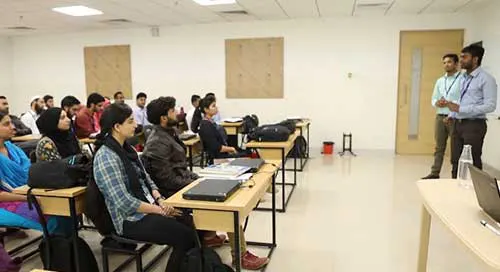Effective Communication Strategies for Distributed Workforce Management

A distributed workforce consists of team members spread across various locations, working remotely to achieve common goals. Success in managing a distributed workforce is achieved when communication, collaboration, and unity transcend geographical boundaries.
Distributed workforce management offers numerous benefits like access to a broader talent pool and reduced overhead costs. However effective communication is the main challenge of this management.
- Due to a lack of face-to-face communication, team members miss out on nonverbal cues important for effective communication.
- Real-time collaboration becomes complex since the team members are spread across different locations and time zones.
- Over-dependency on written communication in the form of email causes major hindrances in effective communication.
- Misinterpretations or misunderstandings due to cultural differences can impact communication effectiveness and team dynamics.
- Communicating sensitive or confidential information over digital channels requires careful consideration of security and privacy concerns.
- Building and maintaining personal relationships with colleagues can be challenging in a remote work environment. This can impact team cohesion, trust-building, and collaboration.
Automattic is the company that developed WordPress software. It offers services like website hosting, design, and e-commerce. Let us understand distributed workforce management communication strategies as Automattic is the prime example of the same.
- Remote-First Culture: Automattic has a remote-first culture. Remote work is the default way of working. This ensures that all communication and processes are designed to support remote collaboration.
- Communication Tools: Automattic relies on various communication tools to facilitate remote work. They use tools like Slack for real-time messaging, P2 blogs (internal blogs) for longer-form communication, and Zoom for video meetings and presentations.
- Asynchronous Communication: Automattic emphasizes asynchronous communication, where team members don't need to be online at the same time to collaborate effectively. This approach accommodates different time zones and work schedules.
- Open-Source Collaboration: Automattic's commitment to open-source projects like WordPress reflects its distributed collaboration ethos. Many of its employees contribute to open-source initiatives, and this remote collaboration model extends beyond the company itself.
- Results-Based Performance: Automacticc doesn’t micromanage hours worked; it focuses on results. Each team member is responsible for setting their schedules and delivering on their commitments.
- Global Team Diversity: Automattic's distributed workforce includes employees from around the world, contributing diverse perspectives and ideas. This global diversity enriches the company's products and services.
- Regular Meetups: It organizes company-wide meetups where employees from different locations gather in person. These meetups foster stronger relationships and team bonding.
- Training and Onboarding: Automattic has a comprehensive onboarding process for new employees, including a "BuddyPress" system where new hires are paired with experienced colleagues to help them navigate the remote work environment.
- Internal Documentation: Important decisions, discussions, and project updates are documented on internal platforms. This documentation ensures that information is accessible to all team members regardless of their location.
- Transparent Communication: The company's CEO, Matt Mullenweg, maintains an open and transparent communication style through regular updates on the company's progress, challenges, and strategic direction.
- Feedback and Recognition: Automattic encourages regular feedback through tools like "kudos" on Slack and a "Peer Review" program.
The following highlights companies with well-established communication strategies and their ongoing efforts toward achieving constant enhancement.
Case Study 1: GitLab is a tech company that offers a web-based platform for software developers to manage their projects, code, and collaboration.
Communication Strategy
GitLab has a handbook that is accessible to everyone. The handbook contains detailed information about the company's values, processes, goals, and even financials. This transparency ensures that all team members have access to the same information, fostering a sense of equality and shared purpose.
Continuous Improvement
GitLab uses its product for collaboration and project management. This allows team members to propose improvements and changes. Team members can contribute ideas or changes to the company's practices. This leads to constant refinements and adaptations based on real-world experiences and gives its team members a sense of belonging.
Case Study 2: Buffer is a social media management company. It has a distributed team that operates remotely.
Communication Strategy
Buffer's unique communication strategy is its transparent salary formula. The company openly shares how they calculate employee salaries, taking into account factors like role, experience, and location. This level of transparency builds trust and eliminates salary-related concerns that often arise in remote settings.
Continuous Improvement
Buffer emphasizes regular feedback and check-ins. They conduct weekly one-on-one meetings between managers and team members to discuss progress, challenges, and feedback. They also encourage employees to offer suggestions for improvements through open channels of communication, contributing to their culture of continuous growth.
Conclusion
Distributed workforce has become a norm and effective communication in distributed workforce management is an ongoing process. Companies need to recognize challenges and use the tools at their disposal to navigate this paradigm shift towards a more connected and successful distributed workforce future. Learn more about our insights on Thought Leadership.



























